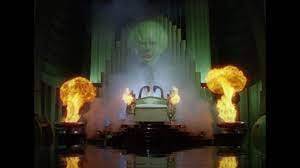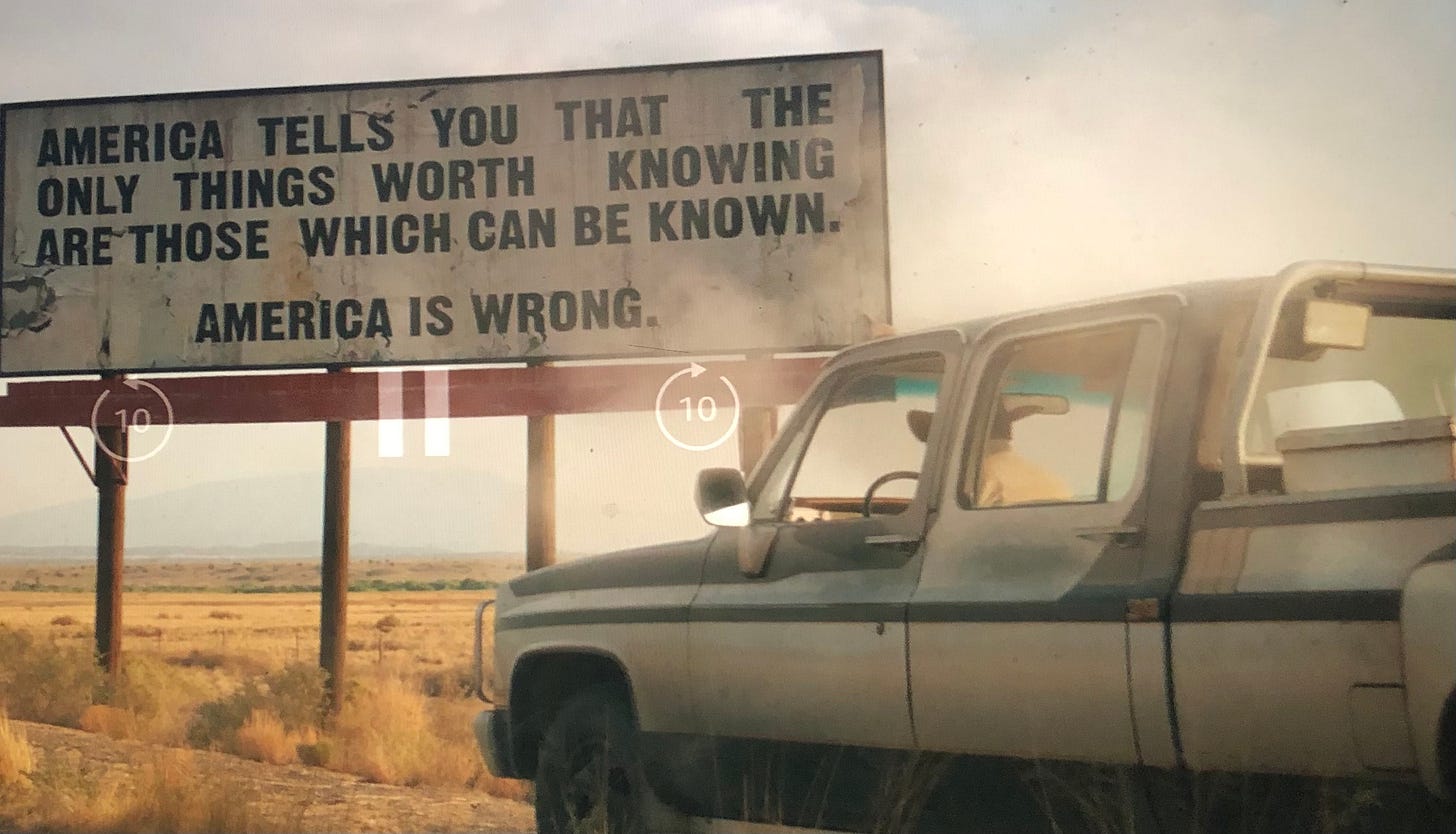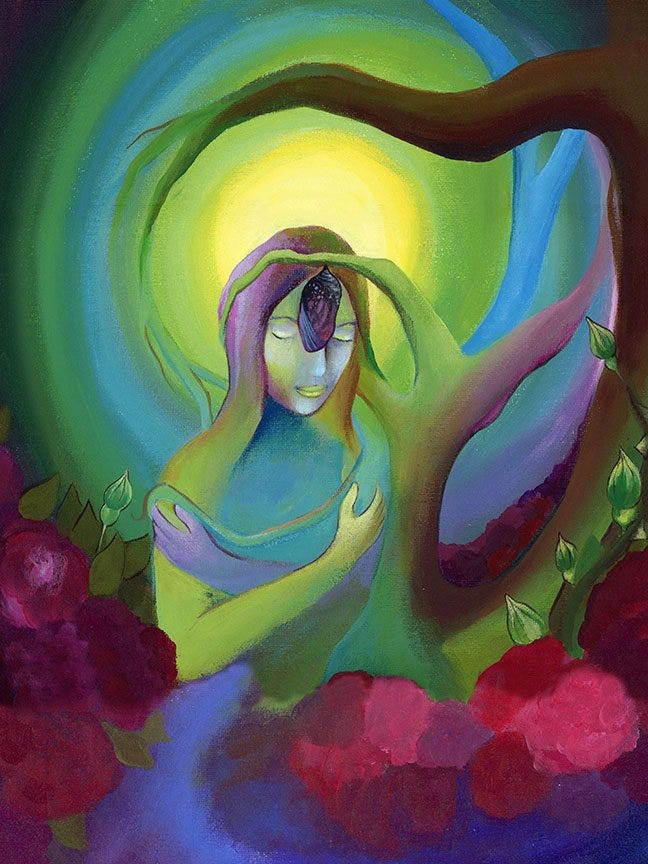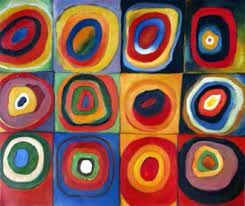PAYING ATTENTION TO THE MAN BEHIND THE CURTAIN
An Unveiling (It hurts like hell+ what we can do about it), Feeling The Squeeze, Practices + Rhythms To Support You In These Difficult Days, My Plan For Now, and More...
It took courage for Dorothy to pull back the curtain to reveal the truth.
It takes courage for us to see and feel the things that are being revealed to us.
An unveiling is here. An apocalypse of sorts.
Not the kind with zombies, or with scorched earth and no signs of life. Not the kind with the four horsemen. I’m talking about the one that pulls back the veil and shows us what is actually happening, In Greek, apocalypse simply means "an unveiling or unfolding of things not previously known and which could not be known apart from the unveiling".
There’s no hiding from it. The time has come for it to be seen. All of it.
And it’s a lot.
From the continual mass shootings of our children with no real change in sight to the daily trauma inflicted on BIPOC and marginalized communities to the latest Supreme Court rulings and the loss of reproductive rights of women, the veil is being pulled back and we are being called to look and see. We must not look away.
Bearing witness to what is actually happening in our world is incredibly painful. So painful that sometimes we cannot bear to look at things directly. It hurts us. It frightens us. But we must look. Even if the best we can muster at times is a quick side-glance.
WE LONG TO LIVE WITH OPEN HEARTS AND IT HURTS.
We want to contribute to the co-creation of a better world. There is so much happening and all at once. We are often overcome with the pain of the world.
Our text threads are full of calls to action.
We want to DO something.
WE WANT TO MAKE IT STOP.
We do what we can with the time and resources we have based on our abilities, capacities, and responsibilities.
Then, head in hands, we weep for the collective pain of the world, our communities, our friends, and our own families. We feel so powerless. Our hearts cry out, “ It’s too much.” We don’t want to close our hearts and yet keeping them open to the collective pain of the world feels unbearable.
We cry out because we are incapable of holding the weight of a hurting world alone.
(And we were never meant to.)
FEELING THE SQUEEZE: RETREAT OR REACT
We cannot hold it all …so what are we to do with it all?
If you are anything like me, you might vacillate between taking to the streets in solidarity and crawling under the covers with a bowl of Jamoca Almond Fudge ice cream.
It is no surprise that with the daily onslaught of bad news ( often horrifying news) most of us either retreat or react or vacillate between the two.
Retreat: We run away from it and numb out ( tv, food, substances, work, etc. Numbing out is very different than actual intentional rest and renewal. Only you know which is which for you. (And sometimes the best I can do is watch Netflix and eat snacks, it’s ok.) We often feel guilt or shame for not doing more, we feel overwhelmed and hopeless, and we wonder if anything we do will even make a difference.
React: We dive into action fueled by the raw emotion and real concern. We attempt to address each societal ill as it arises and we might feel disdain for others who are not acting as we are or those who seem to live in their little bubble with no concern for others. We don’t take time to discern holistic action. We rush to solve things but often our actions come out of a deep well of fear, outrage, or panic.
While we likely some spend time at each end of this spectrum, neither of these is a sufficient response and we know it. There is a time for real rest and there is a time for bold action, but are we making these choices from our most anchored, aligned, and holistic self?
What if instead of primarily retreating or reacting, we could practice RESPONDING from a space of wholeness that allows and includes time for rest, renewal, creativity, and restoration ( not numbing), as well as consistent, contemplative decision-making that leads to action based on our full selves: inquiring first from body, mind, and spirit. Neither retreating nor reacting, but instead reconnecting to and responding from our wholeness.
Our response will be healing and helpful if we can approach it with our whole selves. This is where the undeniable power of our spiritual, creative, and embodied practices makes a crucial difference.
Questions I am asking myself:
How and where do I find that sacred intersection? How might that feel in my body?
How do I keep my heart open ( not numb out/shut down) while also caring for myself and acknowledging my limitations?
Where do contemplation and action intersect in my life?
How does my creativity —making, dancing, singing, painting, chanting, drumming, and more— bring me into a new way of knowing and unknowing? Doing and undoing? A fresh approach?
How can I create the conditions for myself to be able to respond from a space of love, offering, and wholeness?
How are my current experiences increasing my heart’s capacity to both witness pain and expand in love?
MY PLAN FOR NOW
1. I commit to seeing reality as it is. I will open my eyes and see it, feel it, and allow this witnessing to move through me as I have the capacity.
This will not feel good. (Dammit.)
It’s not supposed to feel good. (Right.)
It’s supposed to deepen our capacity for loving our neighbor and it’s supposed to help keep us awake.
2. I will look for the helpers and healers and join them. I commit to seeking, seeing and finding THE GOOD.
This will feel good. ( Yay!)
It is supposed to feel good. ( Yes.)
We are built for relationship and community. We are people of hope.
I will actively align with people and organizations that reflect my deepest values and join them to contribute and do my part. I cannot address every social ill and no organization is perfect. I can choose where to place my energy. I can choose to lead in hope and with vision.
3. I will listen with my body and soul and mind, in order to take inspired, aligned action.
This can be a challenge when emotions are strong. Sometimes I want to act immediately, and yes, some actions are timely and need to happen fast. I’m not recommending we sit and meditate when our house is on fire. We need to grab the babies and the animals and get out of there. But when time allows ( which, if we’re honest, is most times) I will put more space between witnessing and waiting for clarity in order to act from an aligned cohesive space informed by my body, mind, and spirit,
4. I will practice a rhythm of life that intentionally attends to these multiple ways of knowing and being.
In this way, I bring all the ways of knowing to the process of discerning what steps are next. What actions are mine to take. The Divine has given us many ways to experience our lives - through our minds, our bodies, our emotions, and our soul. We learn from history- and- herstory and a legacy of those who came before us whose lives teach us. Slowing down to listen to all the ways of knowing, all the ways of being, we are more likely to gain clarity as to what is ours to do ( and what is not) at any given moment.
Emotions: We do not override or bypass the emotions we feel, we give them room to express as we are able. Feelings are not always accurate guides to action, but they are purposeful gifts of our humanity and crucial teachers. When I most want to run from my feelings, may I remember to be extra gentle with myself and ask for support. My emotions have lessons to teach me.
Once we can honor and hear from our emotions, we are often less afraid and more able to settle in and listen to what our souls have to say to us. In quiet and stillness, we can hear the whispering guidance of God-within.
By allowing and welcoming both the storm and the quiet within us, we come to the space where we meet with God-within and intuit what our actions might be from a place of our wholeness.
What does it mean to be an incarnated human-divine being? What does it mean to love God, love ourselves, and love our neighbor as ourselves if not intentionally working toward expanding our capacity to bear great love and great suffering, the two modes of true transformation of self and the world?
RADICAL REARRANGEMENT
In an article from The Center for Action and Contemplation, Father Richard Rohr reminds us that the apocalypse was never bad news, it means something wholly different…
We would have done history a great favor if we would have understood apocalyptic literature. It’s not meant to strike fear in us as much as a radical rearrangement. It’s not the end of the world. It’s the end of worlds—our worlds that we have created…. It’s not a threat. It’s an invitation to depth. It’s what it takes to wake people up to the real, to the lasting, to what matters. It presents the serious reader with a great “What if?”
Our best response is to end our fight with reality-as-it-is. We will benefit from anything that approaches a welcoming prayer—diving into the change positively, preemptively, saying, “Come, what is; teach me your good lessons.” Saying yes to “What is” ironically sets us up for “What if?” Otherwise, we get trapped in the negative past.
Let’s practice moving together from our unflinching look at “What Is” to our heart-expanding shared vision for “What If.” Courage, my friend. We’re in this together.
4 PRACTICES WORTH SHARING:
Welcoming Prayer . The Welcoming Prayer helps to dismantle acquired emotional programs and to heal the wounds of a lifetime by addressing them where they are stored — in the body. It contributes to the process of transformation in Christ initiated in Centering Prayer.
Tonglen. Buddhist Monk Pema Chödrön teaches us “sending and taking,” an ancient Buddhist practice to awaken compassion. With each in-breath, we take in others’ pain. With each out-breath, we send them relief.
Taize Community. The Taizé Community is an ecumenical Christian monastic fraternity in Taizé, Saône-et-Loire, Burgundy, France. Taizé is a prayerful form of music known for its simple, yet rich and meditative character which often takes the structure of an ostinato (a simple melody that repeats over and over) and is meant to serve as a kind of musical centering prayer.
An Interview with Mother Maya Tiwari Maya Tiwari is a humanitarian, world peace leader and author. Also called "Mother Maya", she is an international teacher of Ayurveda, a health activist and the founder of the Wise Earth School of Ayurveda and Mother Om Mission.
And finally, I found comfort in these words from Marlee Grace:
“There are many questions we can ask ourselves - and in order to do that we must also be well resourced in our own bodies and breath. May you go for your little walks and do your morning pages and tend to the things you want to run from. These keep us steady. May we stay steady for the long haul.
It is easy and normal to freeze in these times, especially if you grew up in a home that required freezing to survive. Be gentle with yourself as you sift through what your role in the ecosystem is. You don’t have to save the world, but we do get to take care of each other. And this, what a wild gift.”
What a wild gift indeed. This one wild and precious life. (h/t Mary Oliver.)
See you next week, friends. Breathe. Feel. Pray. Listen. Act.
xoxo Mary
P.S. I love you.









This was so interesting
Mary, you articulated my pain and vacillation perfectly. Thank you. I will try to center on "responding."
Lelia